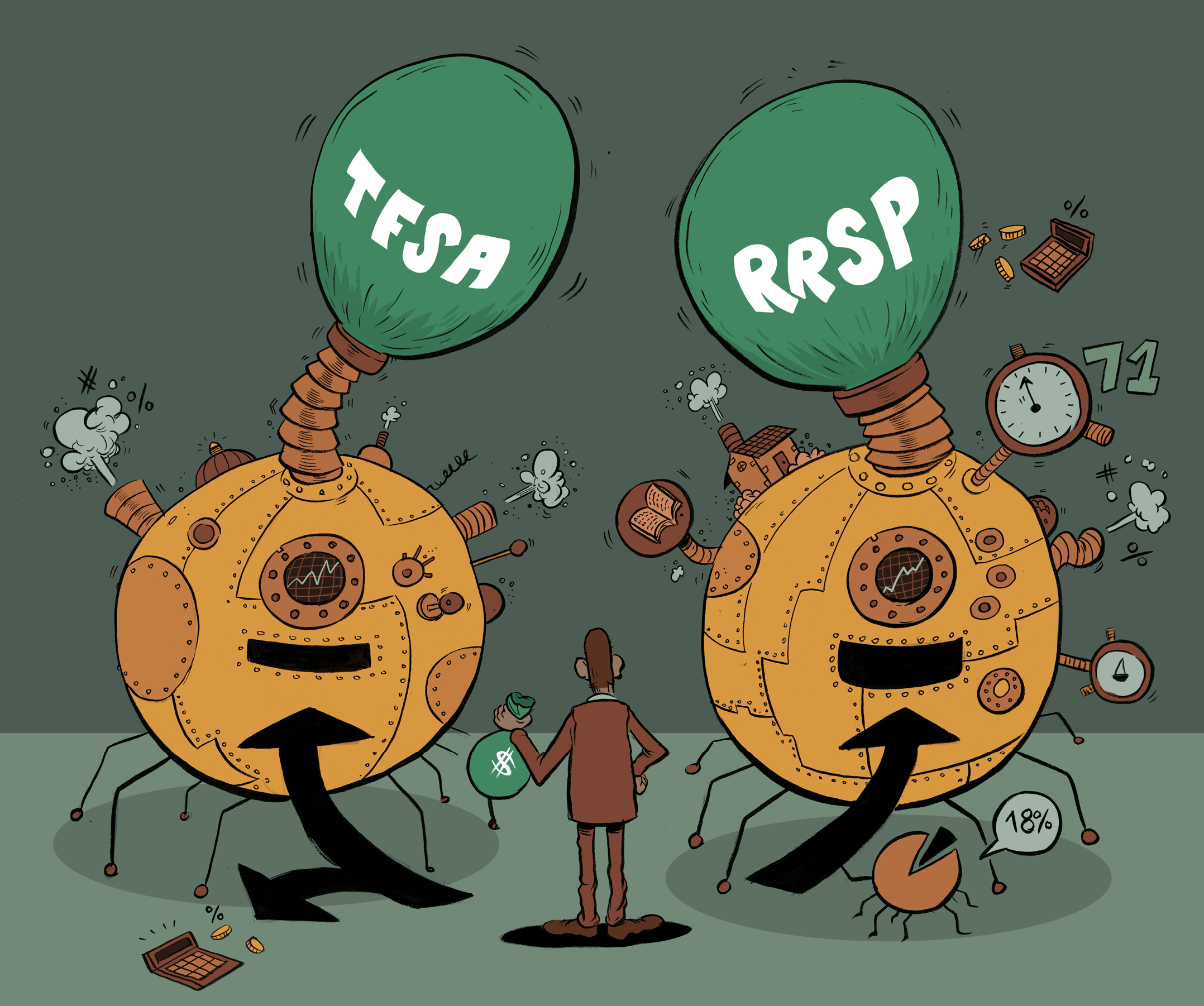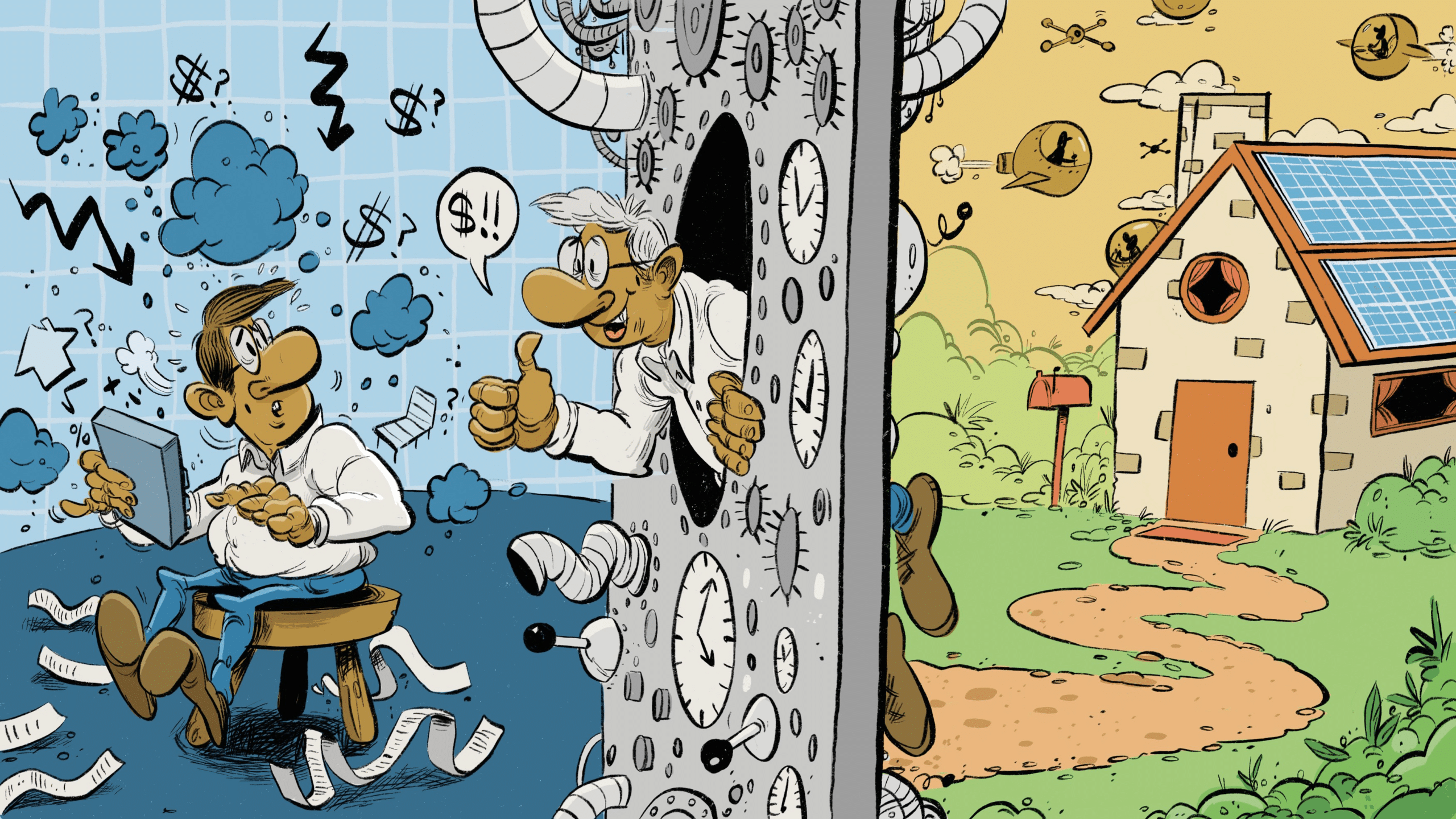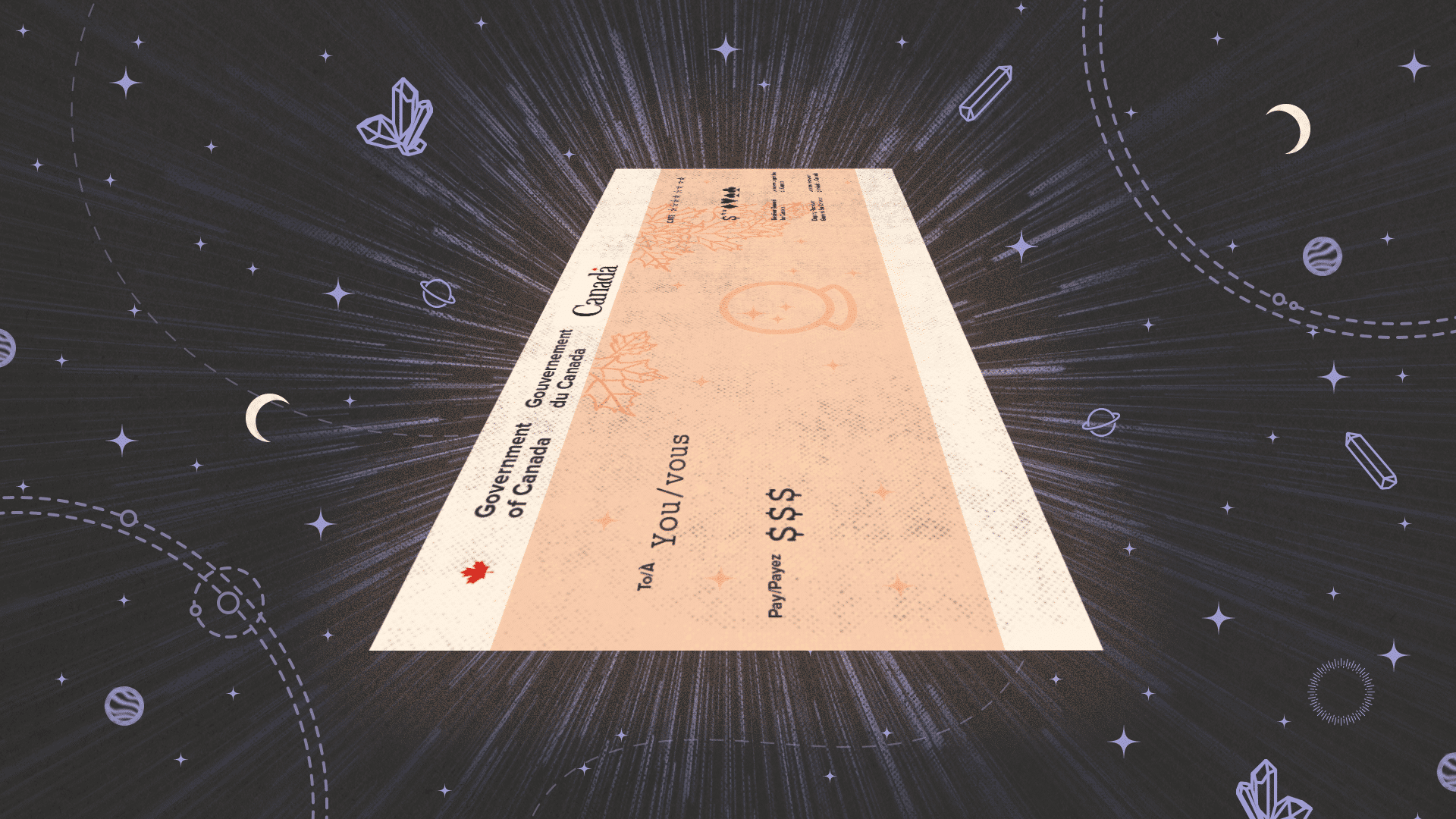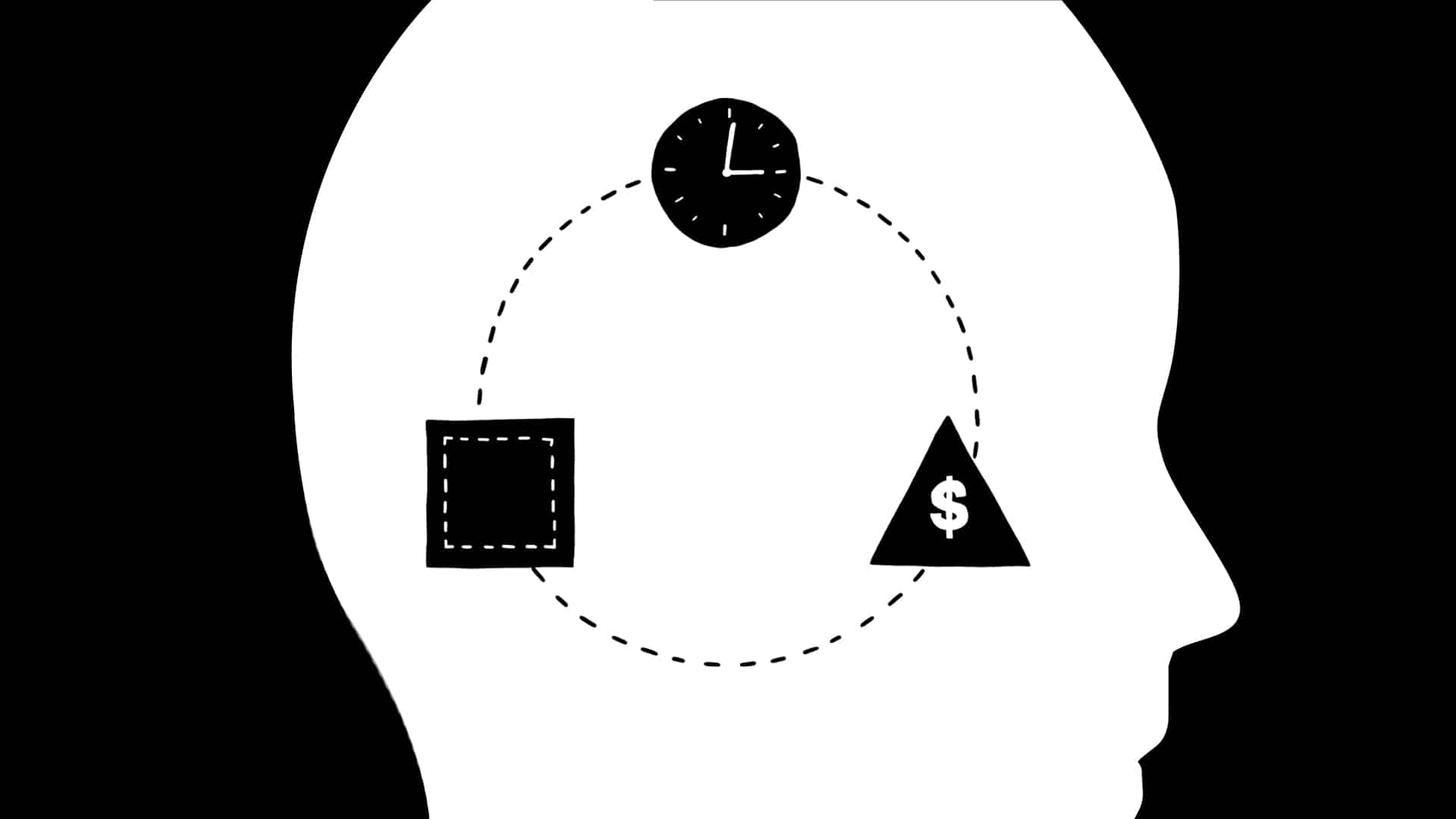
RRSP vs. TFSA: Which one do I choose?
Many of us find the differences between RRSPs and TFSAs difficult to understand. Here’s a handy guide to help you choose which may be the best option for you.
Updated February 2024
Two of the most popular savings plans available to Canadians are Registered Retirement Savings Accounts (RRSPs) and Tax-Free Savings Accounts (TFSAs).1 These accounts allow our money to grow as we save for retirement or save for other items, whether they are large or small. But since the hard-earned money that we have for savings is finite, we are naturally concerned that we make the right choice of where it goes: RRSPs or TFSAs.
Yet, according to one survey by TD Bank, one in four of us doesn’t know the differences between them.2 If you’re confused, don’t feel embarrassed! While the two registered plans share some similarities — both are designed to offer tax advantages to help you grow your money — there are also big differences. If you are managing to save money at this time and are wondering how you can make those savings grow, the questions and answers below may help you decide which plan can benefit you best.
How much can I contribute?
RRSPs
Your annual contribution limit is related to how much you earn. For the tax year 2023, the RRSP contribution limit is 18% of your previous year’s earned income, up to a maximum amount of $30,780 (a number set each year by the government), plus previous unused contribution room less any pension adjustments.
TFSAs
The annual contribution limit is set by the government and is the same for everyone: For 2024, the maximum is $7,000. Keep in mind that unused contribution room gets carried forward every year. For example, if you were at least 18 years old and were eligible when TFSAs were introduced in 2009, and have never contributed to a TFSA, you would have $95,500 in contribution room by 2024.
Do I get tax deductions on my contributions?
RRSPs
Yes. RRSP contributions are tax-deductible. This means any contributions you make may reduce the amount of tax you pay on your income.
TFSAs
No. Contributions to your TFSA are not tax-deductible. Rather than a deduction, a TFSA allows your investments to grow tax-free inside the account.
Will I pay tax when I withdraw the funds?
RRSPs
In most cases yes. (Exceptions include the Home Buyers' Plan and Lifelong Learning Plan. More on those below.) When you withdraw funds from your RRSP, it gets taxed as income. That’s why it may make sense to wait until retirement to begin withdrawals, when your income and tax rate may be lower.
TFSAs
No. The investments within your account grow tax-free and you won't need to pay tax on any investment income earned or when you withdraw the funds.
What kind of investments are eligible?
RRSPs
You can invest your savings into a wide range of qualified investments including guaranteed investment certificates (GICs), mutual funds, exchange-traded funds (ETFs) and stocks and bonds among others.
TFSAs
Your TFSA can hold the same types of qualified investments your RRSP can hold: GICs, mutual funds, ETFs, stocks and bonds.
Can I make withdrawals when I want to?
RRSPs
You can withdraw funds at any time (subject to any restrictions in the investments chosen). But, since the money will be taxed on withdrawal, usually it's best to wait until you retire when your income may be lower.
TFSAs
You can withdraw funds at any time (subject to any restrictions in the investments chosen). This can make it a flexible option for important life goals like major purchases, renovations or vacations.
Can I keep contributing after I'm retired?
RRSPs
Yes, but only up to the end of the year you turn 71. At that point, there are several options available to you, including a Registered Retirement Income Fund (RRIF). If you convert your RRSP into a RRIF, you are required to withdraw a certain percentage of that RRIF annually.
TFSAs
Yes. There is no upper age limit for contributions to a TFSA. You may make your maximum annual contribution every year without any tax consequences.
Are there any other key features of these registered plans I should know about?
RRSPs
The Home Buyers' Plan (HBP) allows you to withdraw up to $35,000 towards the purchase of your first home without triggering additional taxes. Likewise, you may withdraw up to $10,000 per year (or $20,000 in total) for education purposes under the Lifelong Learning Plan (LLP). Both these plans have eligibility requirements, conditions, and come with strict schedules for payback into the RRSP.
A big change in 2023 was the introduction of the First Home Savings Account which was created to make it easier to save for a first home. FHSAs and RRSPs can work in tandem: Money from an RRSP (up to $8,000 a year) can be transferred tax-free for an FHSA contribution. And, if a home is not purchased within the required 15-year time limit, funds from the FHSA must be transferred to an RRSP, again, tax-free. Here's more information on how FHSAs work.
TFSAs
You never lose your contribution room. If you don't contribute for several years, you can make up those contributions at any time in the future. If you withdraw some funds one year, that amount is added back to your contribution room the next year.
How can I calculate how my money can grow?
RRSPs
You can see how your RRSP savings might grow using a Retirement Calculator.
TFSAs
You can see how your TFSA savings could grow using a TFSA Calculator.
So…which one is best for me?
If you are able, you can maximize your contributions for both. Generally, RRSPs are ideally suited for retirement saving and may be beneficial for individuals with a high income. On the other hand, TFSAs offer more flexibility when withdrawing funds which can be helpful when saving for long- and medium-term goals or if you need money in an emergency. But everyone’s situation is different: A chat with a financial advisor may help determine which choice may be the best for you.
DON SUTTON
MONEYTALK LIFE
ILLUSTRATION
DANESH MOHIUDDIN
- Household contribution rates for selected registered savings accounts, Government of Canada, Sept. 13, 2017, accessed Dec. 1, 2020, www12.statcan.gc.ca/census-recensement/2016/as-sa/98-200-x/2016013/98-200-x2016013-eng.cfm ↩
- TD Survey Finds Half of Canadians Know RRSPs and TFSAs are Critical to their Savings Strategy, But One in Four Don’t Understand the Differences, TD Bank, Jan. 27, 2020, accessed Dec. 1, 2020, td.mediaroom.com/2020-01-27-TD-Survey-Finds-Half-of-Canadians-Know-RRSPs-and-TFSAs-are-Critical-to-their-Savings-Strategy-But-One-in-Four-Dont-Understand-the-Differences ↩













